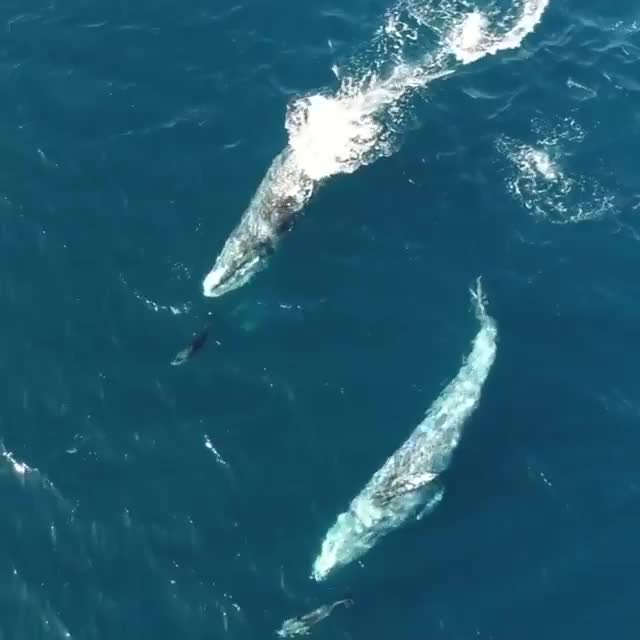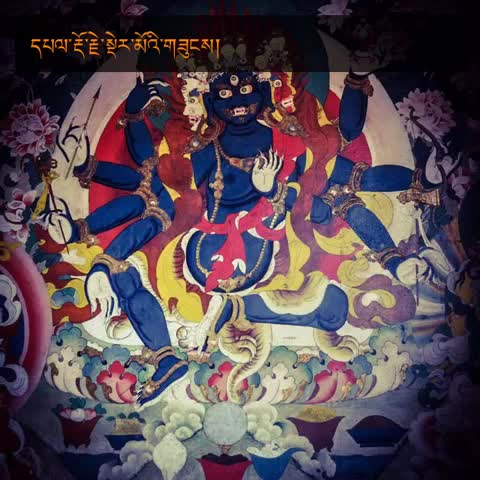Images of the Wildman Inside and Outside Europe
By Forth, Gregory | December 27, 2007

Abstract Originally a figure of folklore, the European wildman gained prominence as a literary and artistic figure in the late Middle Ages, and in this form has commonly been interpreted as exercising a definite influence on later European representations of non-western peoples, non-human primates, and pre-sapiens hominids. Comparing the European image with wildman images encountered among indigenous peoples outside of Europe, this essay comprises a critical review of such arguments. Focusing on physical and behavioural attributes, consideration is first given to similarities and differences between European and non-European wildmen, paying particular attention to images recorded among small-scale societies in Asia. Turning to the reconstructions of paleoanthropology and the objects of cryptozoology, it is then shown how reducing representations of ancient humans and modern wildmen to a discursive survival of the European mediaeval figure obscures both the radical transformation of the European image in later centuries and the independent existence of comparable non-western images.
Introduction:
In 2004, palaeoanthropologists working on the island of Flores announced the discovery of hominid remains they interpreted as a new species, Homo floresiensis. Dating to as recently as twelve thousand years ago, the creature was apparently contemporary with modern humans in this part of Indonesia (Brown et al. 2004; Morwood et al. 2004). One effect of this startling find was a refocusing of anthropological attention on the figure of the “wildman”-a reference to physically primitive and characteristically hairy hominoids reputed to lead a cultureless existence in deep forests and mountain caves. More particularly, it was claimed that Homo floresiensis bears a significant resemblance to such figures, and especially to the “ebu gogo,” sub-human creatures that the Nage people of central Flores claim were exterminated by their ancestors about two centuries ago (see Forth 1998; 2005). [1]
Although more directly derived from cryptozoology (the investigation of putative animal species not recognised by western zoology), the use of “wildman” (or “wild man”) for creatures like the Nage ebu gogo recalls a far older usage. For this was the name given to a figure of European folklore that, from the thirteenth to the fifteenth centuries, developed as a prominent allegorical device in late mediaeval literature and art. Not long before the discovery of Homo floresiensis, the European wildman had received anthropological attention in another context, as a figure that has influenced, perhaps unduly, palaeoanthropological theories of pre- sapiens hominids (see Corbey and Theunissen 1995; Stoczkowski 2002). Corresponding to these two interests, the present essay has two objectives. The first is to review features of the European wildman and consider how far these correspond to features of similar figures in other parts of the world, paying particular attention to categories recognised by small-scale rural societies in Asia and elsewhere. Although these non-western categories obviously cannot be treated comprehensively in a single paper, it should be emphasised that the images to which they refer are indeed indigenous, and not a simple product of contact with Europeans. While historians and others have treated figures such as the Himalayan “yeti,” the North American “sasquatch” (or “bigfoot”), and the Sumatran “orang pendek” as artefacts of western imagination and products of European colonial history, reputed sightings by westerners of all these figures have counterparts in the putative local experience and folk zoology of nonwestern peoples.
Concerning the broader question of how far the image has been a continuous factor of European cultural experience since the Middle Ages, my second objective is to consider critically the hypothetical influence of the wildman on earlier western understandings of non- western peoples and non-human primates, and ultimately on modern palaeoanthropological reconstruction and on cryptozoology. In this connection I argue that the image of the wildman has influenced palaeoanthropological models only indirectly, by way of ethnographic and primatological analogies and earlier understandings of primates and “primitives” more directly influenced by the mediaeval figure. As will become apparent, western and non-western images of the wildman share many features, thereby suggesting variants of a pan- human archetype likely to find expression independently of individual cultures and histories. In so far as both may be traced to the same source in human cognition, such apparent universality challenges historical continuity as an explanation of similarities between late mediaeval wildman imagery and, for example, the imagery of human palaeontology or figures occasionally reported in modern ethnographies. Notwithstanding the resemblances, however, European and non-European wildmen differ in important ways, as do non- western images among themselves. Also, whatever the force of a culturally undetermined proclivity to construct essentially identical images, similar representations encountered in culturally diverse places could be attributed to their reflecting similar empirical referents-if not surviving or recently surviving hominids, then experience of non-human animals, including monkeys and apes. I do not expect to resolve all of these issues in the present paper. Nevertheless, it should become clear how cross-cultural evidence and several methodological problems need to be addressed if these resemblances are to be explained.
The Wildman Within and Without Europe
There is now a considerable canon devoted to the European wildman (for example, Dudley and Novak 1972; White 1978; Husband 1980; Bartra 1994). Most useful for comparative purposes, however, is the art historian Richard Bernheimer’s comprehensive review (1952) of physical and behavioural attributes of the wildman, particularly as a figure of both European folklore and late mediaeval art and literature. As Bernheimer notes, if there is one definitive feature of wildmen beside their generally hominoid form, it is a hirsute body (1952, 1). Indeed, a hominoid form combined with a hairy body defines wildmen everywhere. However, an important difference between European wildmen and their counterparts in other parts of the world may be registered straightaway. Informing and in a sense constituting Asian, African, and American hominoids are reports of reputed sightings-by local people or Europeans-either of the creatures themselves or their traces (for example, footprints and hair). In the case of the Florenese ebu gogo (Forth 1998, 2005) and the “nittaewo” of Sri Lanka (Nevill 1886), one has quasi-historical traditions of the creatures existing in the not-too-distant past. By contrast, few if any European wildmen were the subject of contemporary observations; as Shackley has remarked, if any wildmen were sighted during the Middle Ages, “verbatim descriptions have not survived” (1983, 27). [2]
Consistent with this apparent paucity of phenomenological evidence, the wildman of late mediaeval Europe has so far been investigated almost entirely by humanists, mostly historians and students of art or literature, who have treated the figure as mythical, or entirely imaginary. Archaeologist and cryptozoologist Myra Shackley shares this view, asserting that “until proved otherwise the European wild man … remains a creature of legend” (Shackley 1983,27). Indeed, the image has a long lineage in European literary tradition, drawing on a variety of sources, including depictions of hairy wild creatures from classical antiquity (some of them emanating from Asia, as for example in the Alexander Romance), the Bible, Greek and Roman divinities (such as Pan and the satyrs), and even contemporary reports of primates reaching Europe (Bernheimer 1952, 91-7). It is therefore difficult to disagree with a view of the European wildman as an artefact constructed from a plurality of mostly ancient images. Nevertheless, as Bernheimer (1952) has demonstrated, the wildman of late mediaeval urban and court culture finds a more direct precedent, and a more immediate source, in the lore of European rural folk. In fact, as a category existing independently of literary and artistic fashion, the wildman of folklore survived as a character of local tales and village performances until the nineteenth century and even into the twentieth century.
This older wildman has sometimes been interpreted as a religious category, a divinity of local pre-Christian religion genetically also connected with “figures in the Roman pantheon” (Bernheimer 1952,21 and 41-4). [3] Yet some image of hairy manlike beings living a rough, uncultured existence in desolate places has considerable antiquity also in more northerly and westerly parts of Europe. The image underwent a significant reconstruction in the hands of late mediaeval Christianity, when the wildman became reinterpreted as a feral man, whose condition resulted from separation from Christian civilisation and God’s grace. If the pre-Christian, or folkloristic, wildman was conceived as being much like a natural species-and possibly also a supernatural being, but in any case as a creature whose nature was determined by God-the mediaeval wildman was a degenerate, the model of a lost soul, for whom it was also possible to forsake wildness and regain the civilised, human condition. In the mediaeval view, this degeneration could result from a “loss of mind,””upbringing among wild beasts,” or “outrageous hardships” (Bernheimer 1952, 9-10). Even the wildman’s coat of hair was represented as a result of an acquired state of wildness, not a natural inheritance (ibid. 17). As this should suggest, both in mediaeval and earlier folk representations, wildmen were associated with wild places beyond areas of normal human habitation, most notably forests and mountainous regions, where they are frequently depicted as inhabiting caves. During the Middle Ages, vast stretches of forest were “alive with unfortunates,” including “lunatics, eccentric recluses, criminals, and organised maquis.” At this time, wildness and insanity were almost interchangeable terms, so that forest-dwelling social outcasts could be regarded as “a kind of wild man” (Bernheimer 1952, 12 and 16). Discernible in these circumstances is a kind of empirical support for the image in contemporary experience. The observation also suggests parallels with non-European representations. For example, a hairy hominoid recognised on the eastern Indonesian island of Sumba is named “makatoba” (“demented person”) or “makatoba omangu” (“forest madman”). In various parts of Asia, the existence of putative hominoids also draws regular support from reputed observations by local people venturing into mountains and jungles. In southern Sumatra, twentieth-century sightings by local cultivators of the orang pendek (“short person”), a short hairy bipedal hominoid, have sometimes been interpreted as reflecting encounters with food- collecting forest peoples, such as the Kubu (Brasser 1926; De Wals 1937). Others have attributed the sightings to experience of known or unknown primates, unusual encounters with ground-dwelling orangutans (Pongo pygmaeus), or an undiscovered, largely bipedal ape perhaps related to gibbons and siamangs (Rijksen and Meijaard 1999; Martyr et al. n.d.). At the same time, it is virtually certain that most footprints attributed by Sumatrans to orang pendek actually belong to the Malayan sun-bear (Helarctos malayanus; see Dammerman 1924).
In view of the evident antiquity of the mediaeval image of the wildman, however, and the variety of other sources on which it has drawn, one can hardly trace the origin of the European figure solely to insane, criminal, or eccentric denizens of mediaeval forests-or, in other words, to an aspect of contemporary society. One must further question whether European consumers of artistic and literary representations of wildmen were convinced of their local existence. As Bernheimer suggests, if wildmen had a contemporary existence it was not in Europe, but in lands far away, including, perhaps significantly, Asia (1952, ch. 4). Whether illiterate peasants, of the Middle Ages or earlier, ever reported encounters with hairy hominoids can no longer be known. Although wildmen may have survived as “the subject of credulous peasant belief” until the nineteenth century (ibid. 22), owing to a paucity of records documenting rural experience it is difficult to determine the ontological status of the wildman in rural culture, for example, as a sort of spirit or as a kind of mundane animal.
Paralleling non-western traditions identifying wildmen with specific regions, the wildman of rural European folklore has maintained a definite geographical aspect into the twentieth century. In mediaeval literature and graphic art, wildmen were depicted as quite widely distributed, inhabiting lowlands as well as highlands, including places close to human habitations. By contrast, the wildmen of folklore inhabit relatively well-defined mountainous areas. Their centre is the mountains of central Europe, especially the Alps, “the remotest and least accessible parts of Europe” (Bernheimer 1952, 23). Legendary non-European hominoids inhabit precisely the same sorts of environments. Apart from the obvious examples of the yeti and sasquatch, the orang pendek is best known from the Barisan range of southwestern Sumatra, including the area about Mount Kerinci. Similarly, hominoidal creatures from Flores, including the now extinct ebu gogo, reputedly occur, or occurred, in the remotest and least settled parts of this generally rugged and mountainous island (Forth 1998).
In terms of physical and behavioural features as well, it is particularly the wildman of European folklore-a genre that is probably “closer … to the sources of wild man mythology than much that is preserved in the more sophisticated literature and art of the Middle Ages” (Bernheimer 1952, 22)-that bears comparison with non-European wildmen. While the European figures are frequently depicted as huge, they are sometimes “conceived as possessed of moderate physical proportions,” even occurring as dwarfs (ibid. 23 and 45). Hairy hominoids from other parts of the world also display the same bimodal variation. A review of literature on the yeti, sasquatch, and wildman of China reveals that all include varieties that are respectively larger and smaller than local humans. It is of course the larger varieties of yeti and sasquatch (or “bigfoot”) that are familiar to the western public. Yet even the giant sasquatch has far smaller cousins, for example in the shape of hairy hominoids known to the Bella Coola Indians as “boqs” (Mcllwraith 1992). In addition, while the Sumatran orang pendek and the ebu gogo and similar hominoids of Flores are smaller than local humans, a larger variety of eastern Indonesian wildman is encountered on the island of Sumba (Forth 1981,111-13).
Generally, the European wildman is depicted as a naked creature covered in hair, with only the face, feet and hands (and in some cases the knees, elbows, or breasts) remaining bare (Bernheimer 1952,1 and 23). In mediaeval art, European wild folk are commonly shown with head hair much longer than body hair. This feature is also common elsewhere, although non-Europeans sometimes describe wildmen as possessing head and body hair of the same length, much like nonhuman primates. Hairy hominoids reported from Southeast Asia are sometimes described as lighter skinned than local humans, but are more often darker. “Zana,” a Caucasian female wildman reputedly captured in the nineteenth century, possessed a very dark complexion (Tchernine 1971,155-9). Mediaeval romances similarly depict the European wildman as dark-skinned, but more specifically as turned “black” in consequence of the wild state (apparently by the agency of the sun and wind; Bernheimer 1952,15). On the other hand, whether wild characters of European folklore typically possessed a dark skin, either as a natural or acquired trait, remains unclear.
While the wildman of the Middle Ages is given a generally human form, and females especially are often rendered “distinctly human, even moderately attractive” (Bernheimer 1952, 39), the facial features of folkloristic wildmen are less clearly discerned. A giant female figure from the Tyrol and Bavarian Alps named “faengge” is, however, characterised as a “colossal ogre of great strength” demonstrating “appalling ugliness.” Similarly, festival masks depicting wildmen were made “as ugly as possible” (ibid. 39 and 82). Smaller wild women of Bavaria and central and northern Germany, further distinguished from the Alpine ogresses as “modest” and “retiring,” are described as having “creased and oldish faces” (ibid. 33), while yet another female wild figure from tJiirteenth- century Germany possesses, in addition to a hunchback, a “huge black head,” a flat nose, and big teeth (ibid. 38). Arguably, these several descriptions mostly closely approach something resembling a non-human primate or an archaic hominid. Yet in the absence of further specifics, such likeness is difficult to confirm.
A physical attribute of the European wildman deserving special mention is quite specifically feminine. These are long or pendulous breasts, described by Bernheimer in a language also commonly encountered in local descriptions of Asian figures as “so long they can be thrown over her shoulders” (1952,33,38,39, 131 and 157; see also Mazur 1980, 8-9). Asian representations that incorporate prominent breasts include the yeti (Oppitz 1968), Chinese wildman (Zhou 1982, 20), wildmen of Central Asia (Tchernine 1971, 58), and the Florenese ebu gogo (Forth 1998). Some accounts of the North American sasquatch have also described the females as heavy breasted. Not surprisingly, among European exemplars the appendages appear to be associated with larger female figures rather than smaller wild women. As Bernheimer indicates, such breasts contribute to the female creature’s ugliness, a point not always clear from representations of wildmen elsewhere, but which is obviously contrary to any interpretation of large-breasted females as symbols of fertility.
Other widely attested attributes of the wildmen of European folklore include an inability to speak. The creature’s aforementioned strength is not simply extreme; it is “supernatural,” enabling them to uproot trees and conquer large animals. And combined with such power is a “savage temper” (Bernheimer 1952, 23). European wildmen are often depicted as carrying a heavy club or mace. Folklore also credits them with knowledge of medicinal plants, and of the ways of animals. Coupled with their tremendous strength, this knowledge, as well as their “sympathy” and “kinship” with wild beasts, makes the wildman a “master of animals” (ibid. 23, 24, 25 and 26). Similarly consistent with their association with raw nature (and evidently paralleling their violent tempers), wildmen rejoice when storms and thunder occur but disdain fine weather (ibid. 24 and 31-2).
European wildmen are characteristically anthropophagous, with a special liking for the flesh of children (Bernheimer 1952, 23 and 33). A similar habit is attributed to some Asian wildmen. However, in Southeast Asian instances, the notion of catching and eating infants is explicitly linked with a use of wildmen as bogeys. This may equally apply to the European representation, since parents employed stories of wildmen as “pedagogical functions to frighten obstreperous children into obedience” (ibid. 24). According to a belief found in the Italian Tyrol and Switzerland, wildmen will abduct infants and replace them with their own wild offspring (ibid. 23). The idea strongly recalls practices attributed to fairies in the British Isles (Silver 1999); it is also comparable with the reputed habit of hairy hominoids recognised in parts of Flores, on Sumba, and also in Madagascar (Decary 1950, 207). Adult women, too, can be the objects of abduction for European wildmen (Bernheimer 1952,23), as apparently can Amerindian women for the sasquatch (or at any rate, possible Amerindian prototypes of the current Euro- American figure). Conversely, European wild women are depicted as attempting to entrap, or “captivate,” human males (ibid. 34), just as counterparts on Sumba (eastern Indonesia) might occasionally try to take a human mate. However, only European wild women, like European witches, employ an ability to change shape in order to satisfy their lusts, appearing to men as a beautiful young woman but later changing back into a “libidinous hag” (ibid. 34 and 35-7). This erotic prochvity, moreover, appears to be a development peculiar to the mediaeval representation, in contrast to wild figures of European folklore. If wildmen are often depicted as capturing humans, the reverse also applies. A common theme in both mediaeval iconography and seasonal dramatic performances is the hunting and capture of a wildman, or a person impersonating such a figure (Bernheimer 1952,50-6). Similarly, European folk traditions describe the pursuit and capture of a wild woman (ibid. 27). These representations, too, reveal intriguing parallels with non-European figures. In various parts of Asia, one encounters stories, often quite specific with regard to time and place, of the capture of single specimens, with some even finding their way into local newspapers (Forth 2006, 345).
Differences and Similarities
In several respects, the European wildman bears an obvious resemblance to hairy hominoids reported from other parts of the world; however, so striking are some similarities that differences can too easily be overlooked. For example, owing to an absence of detail in folkloristic representations, it is difficult to say whether the European wildman corresponds to any of the Asian exemplars in terms of morphologically primitive features (particularly of the face, feet, and limbs). As regards the pendulous breasts (a feature that is not at all primitive), the wildman of Europe resembles a number of non-European figures quite precisely. But the feature’s distribution is actually discontinuous. In Southeast Asia, the breasts are mentioned only for some wildmen of Flores and Sumba (neighbouring islands of eastern Indonesia) and are absent from African, Oceanic, and Australian representations. Also, the breasts are not always reported for the sasquatch or the yeti, in the second instance featuring more in folktales than mundane descriptions of the creatures (Oppitz 1968).
Other resemblances require similar qualification. The European idea that wildmen will attempt to abduct humans for sexual or marital purposes recalls Sherpa tales about yeti (Oppitz 1968), the “umang” of northern Sumatra (Steedly 1993), and the Sumbanese wildman (under the name of “meu rumba”; Wielenga 1913,264). Yet it is not prominent in other non-western representations. [4] In fact, while certain aspects of the mediaeval wild figure reveal distinctly erotic overtones (to which Bernheimer devotes an entire chapter), most Asian and African images appear to lack these altogether, as do modern accounts of the North American sasquatch. Similarly, while the European wildman is anthropophagous, the characteristic of man- eating is attributed only to the “almas” of Mongolia (Tchernine 1971, 58), the yeti (Oppitz 1968, 140), and some eastern Indonesian figures (Forth 1981, 111; 1998,103). In these Asian cases, moreover, the attribution is irregular or confined to folktales, and is often contradicted in mundane accounts of the same categories. Eastern Indonesians thus qualify the idea that wildmen eat people as a fiction linked with their present deployment as bogeys. The indigenous North American figure called “zonokwa” is described as capturing and consuming human children; yet the sasquatch, a mostly Euro-American derivative of zonokwa and other native figures, is not. The nittaewo, reputedly extinct hairy hominoids of Sri Lanka, also did not eat humans, even though they were given to killing them (Nevill 1886).
The mediaeval theme of hunting and capturing wild folk may find an echo in the reputed capture of hairy hominoids elsewhere, for example in Central Asia (Tchernine 1971, 43) and the Caucasus. Nevertheless, Asian stories of wildman capture mostly concern single incidents involving specimens incidentally encountered, or accidentally caught in traps set for other animals. Exemplified by legends from Flores and Sri Lanka, and Himilayan tales featuring yeti, other non-European traditions incorporate the theme of exterminating wildmen entirely or in large numbers. But, while mock killing may be included in dramatic performances, extermination forms no obvious part of the European representation.
Other resemblances between European and non-European wildmen are either more specific or less widespread. For example, like apparent counterparts in the Himalayas, Central Asia, China, and possibly eastern Indonesia, European wildmen evidently have a liking for alcoholic beverages, and so can be captured by first being made drunk (Bernheimer 1952,25). Yet the European figure differs in more general ways from otherwise comparable Asian figures. Whereas the mediaeval image concerns a human being made wild by separation from civilisation, interpretations of wildmen as feral humans are elsewhere uncommon. Also, while the European figure lacks speech, some Asian exemplars are credited with linguistic ability (see, for example, Colarusso 1980; Forth 1981), albeit of a rudimentary or imperfect kind. Being less naturaUstically represented, wildmen of both European folklore and late mediaeval culture possess a greater number of fantastic, or seemingly “spiritual,” attributes than do most Asian counterparts. Their strength is unearthly and, like spirits everywhere, they are able to change shape. Paralleling the European wildman’s power over animals are Sumatran and central African beliefs according to which local hominoids herd wild pigs (Westenenk 1932; Heuvelmans 1980). Nevertheless, in this respect the European figure is equally reminiscent of Indonesian nature spirits, like the “nitu” of Flores, represented as the owners of wild animals (Forth 1998). The European wildman’s violent temper signals another difference from both the hairy hominoids of Asia and the sasquatch of North America, mostly described as shy, reclusive, and unaggressive.
One respect in which European wild folk appear less fantastically conceived than non-European figures concerns the inverted feet attributed to the Sumatran orang pendek, the Malagasy “kalanoro” (Decary 1950,207) and, according to one account, the Australian “yahoo” or “yowie” (Groves 1988, 124), but not to European counterparts. Such inversion, however, is by no means exclusive to wildman images, being associated with a broad class of spirits (including witches) the world over. In some instances where such feet are attributed to wildmen, the attribution may moreover have an empirical basis in footprints of animal or human origin. For example, primatologists have linked the supposedly inverted feet of the orang pendek with tracks of orang-utans (Rijksen and Meijaard 1999, 62-3) or sun-bears (MacKinnon 1974,114-15).
On the whole, then, European and non-European wildmen differ considerably. Contrary to expectation, the European figure reveals no greater resemblance to hominoids of the Caucasus and Central Asia than it does to wildmen elsewhere in Asia or on other continents, even though the former occurred as a character in village festivities in proximate parts of eastern Europe and Turkey at least until the mid-twentieth century (Bernheimer 1952, 73-4). This discontinuity seems consistent with the absence of reported sightings of wildmen in Europe (at least for hundreds of years) as compared with the continuity of claimed sightings of Caucasian hominoids well into the twentieth century. It might even be thought to point to a real difference in the experiential bases of the two representations, such that only the Caucasian figure is grounded in recent experience of some zoological reality. Otherwise, what might account for the difference is unclear.
While European and non-European wildmen are comparable in general outline, the dissimilarities, both substantive and circumstantial, counter attempts to reduce indigenous non-European categories to an artefact of colonialist or other western ideology (for example, orang pendek according to Gouda 1995; or the yeti according to Dudley and Novak 1972). The wildman might be deemed an archetype; yet its expression from place to place varies considerably. The core image comprises a generally human physical form combined with a hairy body and lack of clothing or other material technology, but particular instances incorporate other, rather more variable features. By the same token, the archetype can be called “synthetic” (Needham 1978). Whatever other elements may locally accrete to it, the core image is certainly widespread, and universal in regard to its occurrence in many very different and historically unrelated cultures. As a figure to which human thought naturally tends but does not invariably or continuously represent, the image of the wildman is likely to be triggered by a range of empirical experiences, some of which will correspond closely to the archetype (perhaps an unfamiliar ape, for example) or will correspond to this partly or minimally (for example, a bear or even a physically indistinguishable member of a disparaged ethnic group). There can be little doubt that a hypothetical encounter with an Australopithecine or Homo erectus, say, would (unless the observer was educated in paleoanthropology) evoke a representation identifiable as an instance of the wildman image. The representation would not need to be a completely accurate description; it could even be fantastically elaborated in one or more particulars and still remain fundamentally true to the universal image. The Metamorphosis of the European Wildman
As should by now be clear, speaking of the wildman in the singular, whether with reference to European or non-European images, is mostly an expository convenience. If the mediaeval figure represents a transformation of a preChristian folk image, since the Middle Ages the concept has undergone further metamorphoses. Following a common interpretation, the literary and artistic figure was appropriated by an emerging scientific cosmology, reappearing as the “caveman”-and eventually (and more exactly) as “prehistoric man”- and also as contemporary “primitive man.” The first stage in this hypothetical “naturalisation,” as it may be called, was a Renaissance revision of the wildman as an extinct creature identifiable with past populations, and more specifically with the aboriginal inhabitants of various European countries (Bernheimer 1952, 120). Not much later, “wild men” were discovered outside of Europe, including the New World, when an equation of non-European “savages” with the European figure resulted in misattribution of certain physical traits to the former. Thereafter, the wildman achieved another partial reincarnation as a contemporary natural species in Linnaeus’s classification of 1735, where “homo ferus” is listed as a subdivision of Homo sapiens (Hodgen 1964: 424-5). About the same time, the figure came to be identified, or conflated, with anthropoid apes.
In 1884, employees of the Canadian Pacific Railway working near the town of Yale in southwestern British Columbia encountered, and subsequently captured, a hairy humanlike creature with a height of 1.4 metres. According to the newspaper report, their captive resembled a gorilla. Dubbed “Jacko,” an epithet ultimately derived from a West African name for the chimpanzee, the evidently ape-like creature’s actual identity remains a mystery to the present day. Initially, the railwaymen thought the hirsute creature might be a “demented Indian” (The Daily Colonist, Victoria, B.C., 4 July 1884). Although proposed in the late nineteenth century, this hypothetical identification, rejected after the specimen was inspected at close range, reflects a far older attribution to North American Indians of hairy bodies, as well as practices of eating raw meat and cannibalism (Dickason 1980). (Interestingly enough, it was recommended that Jacko not be fed “raw meats” lest these make him “savage.”) An even more recent echo of this representation is discernible in the twentieth-century designation of large, hairy bipedal creatures reputedly encountered in the interior of the large eastern Canadian island of Newfoundland, as “wild Indians” (Taft 1980). Jacko subsequently became incorporated into sasquatch lore, as a supposedly young specimen of this category. In fact, he is the one instance interpreted as a real animal by bigfoot debunker David Daegling (2004), although Daegling dismisses the creature, somewhat disingenuously, as an escaped chimpanzee.
As pernicious as the identification of American natives with hairy wildmen may have been, the late mediaeval humanisation of the pre-Christian wildman as a feral man nevertheless capable of civilisation and redemption had a more beneficial effect. Not only did it facilitate a view of Amerindians as similarly human, but it paved the way for their alternate representation as “noble savages,” free of the ills of civilised society (compare White 1978,168 and 183ff). A positive evaluation of wild folk, however, involving as its converse a critique of civilisation, has a long history in Europe, going back to the Greeks and Romans (Bernheimer 1952, 102- 4). It therefore does not reflect a specifically mediaeval development. At the same time, the critical attitude towards human society arguably reflects an individualistic and even anti-social impulse that would barely be intelligible to many non-Europeans. Accordingly, while the wildman of Europe might in certain respects be construed as a symbolic expression of a facet of western individualism, the construction can scarcely apply to comparable hairy figures in other parts of the world, and least of all to ones recognised by villagers in places like Nepal, rural China, southern Sumatra, or eastern Indonesia.
Not just in North America, but also in Australia and Africa, expanding Europeans construed non-western peoples they encountered as wild, sometimes explicitly designating them for example as “wild tribes.” They also described them as hairy. Australian aborigines and Central African pygmies may, inadvertently, have lent some credence to this evaluation by being noticeably hirsute, even by European standards (Birdsell 1993)-in contrast to the typically glabrous Amerindians. Smith (1989) has made a good case for the yahoo, a hairy hominoid reputedly encountered by rural Euro- Australians in the late nineteenth and twentieth centuries, as a partial reflection of relatively hirsute Australian aborigines (Smith 1989). In the sixteenth and seventeenth centuries, thus about the same time as Europeans were constructing an image of non- western peoples as “wild” humans, they also began acquiring more direct familiarity with anthropoid apes-animals they initially perceived as wild creatures with exaggerated human qualities. The ironic result was that apes were effectively humanised in a similar degree to that in which non-western peoples were de-humanised. The extent of primate humanisation can be judged by a series of eighteenth-century illustrations reproduced in Yerkes and Yerkes (1929,18-23) that show anthropoid apes holding staves or clubs, a technology earlier attributed to the wildman and later to the “caveman.” In fact, this graphic provision of wooden accessories to the animals continued until well into the nineteenth century-see the illustration of a male orang-utan from Mivart (1873), reproduced as Figures 1-6 in Maple 1980-just as a perception of some non- westerners as “ape-like” continued into the twentieth century (see for example, Johnston 1902). [5]
As a further irony, it may be recalled how ancient literary images-found for example in the accounts of Pliny, Hanno and Agatharchides, and interpreted as precedents of the mediaeval wildman-were themselves likely based on apes (Bernheimer 1952, 87- 8). [6] Just as probable, however, other images reflected “primitive” humans, such as African pygmies. For his part, Edward Tyson, in his monograph on the dissection of a “pygmie”-the name he applied to a chimpanzee-endeavoured to prove that the “pygmies” of classical antiquity (like the satyrs, cynocepheli, and other fabulous entities) were themselves derived from ancient experience of primates (Tyson 1699). Buffon, on the other hand, thought the existence of pygmies was “founded in error or in fable,” and that people of diminutive stature were found “only by accident, among men of the ordinary size” (1870,147). He was of course proved quite wrong by the European discovery of African pygmies in the nineteenth century. [7]
If the European wildman does not explicitly appear in Tyson’s treatise, this is because, by the end of the seventeenth century, the figure had all but disappeared from literary and popular discourse. Nevertheless, Tyson’s “pygmie” (a chimpanzee) was depicted as standing erect and supported by a stick. Recently, such representations have been construed as indicative of continuity in European wildman imagery, and as a “projection” of the mediaeval figure onto non-western peoples and non-human primates (Stoczkowski 2002, 81). However, advancing knowledge of apes-initially conceived as kinds of humans, albeit wild onesrevised previous conceptions of the wildman beyond recognition. Culminating in a late-eighteenth century perception of apes and humans as radically different kinds of beings (Wahrman 2004, 130-53), increasing European familiarity with primates from the sixteenth century to the present sealed the fate of the late mediaeval figure once and for all. Recent reappraisals of the intellectual and technological abilities of apes, resulting in a view of chimpanzees, especially, as bearers of culture, and even as a variety of human being (Cavalieri and Singer 1993; McGrew 2004), might seem to challenge this conclusion. [8] For in regard to the hairiness and great physical strength of these new- found “humans,” this recent, implicitly postmodern, understanding brings some great apes very much closer to both European and non- European conceptions of the wildman. Yet, as a reasonable inference from the latest scientific evidence, interpreting such views as a survival, or revival, of the older figure of European folklore and late mediaeval culture would be quite unwarranted.
A less equivocal persistence of wildman imagery may be discernible in modern paleoanthropology. Stoczowski (2002, 78-82) traces several features of the “caveman,” the earliest modern conception of prehistoric hominids, directly to the European image. One feature, of course, is the cave itself; that is, the view of ancient humans-like the stereotypical wildman-inhabiting caves. Another is the club, an implement that, as just shown, was also credited to seemingly bipedal apes; recently, the implement has turned up in the ubiquitous illustration depicting the newly minted chrono-species, Homo floresiensis (created in 2004 by Peter Schouten) as a male equipped with what appears to be a cudgel or club. The hairy body might be another feature the caveman owes to the wildman. Yet, one can reasonably infer hairiness from the evolutionary fact that ancient hominids were closer to apes, which are incontrovertibly hairy. And further qualification is required in regard to nineteenth-century romantic views of ancient cave- dwelling humans as glabrous and generally resembling fair-skinned and fully modern Europeans (Leakey and Slikkerveer 1993, 113; and see also 119, which shows Emile Bayard’s 1870 painting “Primitive man”). Not only in the nineteenth and twentieth centuries, but in classical antiquity as well, extinct peoples of the distant past were conceived as hairy humans lacking in civilisation (Bernheimer 1952, 85-6). So too were “fabulous races” inhabiting faraway lands and, closer to home, certain spiritual beings or divinities. Evidently, then, this is another idea with a long western lineage. Yet modern views of human prehistory are fundamentally different from these earlier representations, particularly as they include beings that are not fully human (namely, pre-sapiens hominids) and, more importantly, because of their grounding in a theory of evolution. In both respects, it is worth recalling that the mediaeval wildman, for all his deficiencies, was still a man, who, although combining human and animal traits, never sank “to the level of an ape” (Bernheimer 1952,1). As Bernheimer has argued, owing to the absence of an evolutionary framework, this figure could not really be conceived as a “missing link.” Christian belief in the “unique metaphysical dignity of man,””the purity of all created species,” and the Great Chain of Being (ibid. 7) also excluded any modern conception of zoologically transitional forms.
These points obviously challenge Stoczkowski’s characterisation of the mediaeval wildman as a “missing link” (2002, 81). By the same token, they qualify his suggestion that the intermediate character of the wildman facilitated the “projection” of this image onto prehistoric man and contemporary “primitives.” Precisely because the mediaeval figure was ambiguous in relation to prevailing definitions of humanity and animality, the wildman was an object of ambivalence in mediaeval thought (see Bernheimer 1952, 5-6 and 7). In this respect, the figure differed, for example, from the current representation of Homo erectus, a species that is decidedly not ambiguous in the context of modern palaeoanthropological theory. [9] In fairness to Stoczkowski, it should be noted that his critique of palaeoanthropological research, as overly influenced by non- scientific and often ancient ideas concerning early humans, focuses primarily on causes and processes-for example, of the evolution of bipedalism and tool manufacture. Certainly, he does not deny palaeontological evidence for primitive cranial and skeletal morphology. Nevertheless, the extent to which the physical image of the European wildman continues to be reflected in scientific discourse on ancient hominids, if not negligible, is far less than this author seems to suggest.
Confirming the completeness of the wildman’s modern transformation into something like a natural species are reactions to the discovery of Neanderthal man in 1856. Had the Neanderthal remains been unearthed five hundred years earlier, say, they might have been attributed to a wildman. Yet, for contemporary interpreters, including the anthropologist Rudolf Virchow, they were the relicts of a pathological modern individual, a rickety saddle- weary Mongolian Cossack who had died pursuing Napoleon’s army in 1814 (Trinkhaus and Shipman 1993, 58-9). [10] It is true that Schaafhausen and Fuhlrott, who described the original skeleton in 1857, speculated that the remains may have belonged to “one of the wild races of North-western Europe, spoken of by Latin writers,” or to autochthones who preceded German immigrants (ibid. 50); but these categories are at best historical derivatives of the wildman of the Middle Ages, and not the mediaeval figure itself that, in a sense, was contemporaneous with its mediaeval propagators. In a purely hypothetical scenario, if modern Germans were somehow to encounter a Neanderthal, it is unlikely, to say the least, that they would associate it with the earlier figure of the wildman. In all probability, our hypothetical observers would identify it as a “caveman” or, indeed, a “Neanderthal man.”
The Wildman and Cryptozoology
The last speculation nicely introduces another field of modern enquiry, the marginal science of cryptozoology. As an enterprise closely bound up with a largely popular belief in crypto-species, including ones consumable as “ape-men,” cryptozoology might appear a more promising arena for the persistence of European wildman imagery. But in this case too, the influence has been neither simple nor direct. For one thing, the majority of hominoids investigated by cryptozoologists are ultimately folk categories maintained, as we have seen, by non-European peoples. To be sure, the North American sasquatch and Australian yahoo have reputedly been observed by Europeans, and mostly it would seem by people of British rather than continental European extraction. But it is to say the least unlikely that many of these are familiar with the wildmen of European folklore or of mediaeval literature and iconography. Nor, typically, do such people possess a scientific background. Although many probably subscribe to popular versions of scientific ideas, such as “humans evolving from apes” and “missing links,” there is also the question of how far these vernacular notions might affect the perception of people who claim actually to have seen a sasquatch. Obviously, exposure to the ideas cannot by itself produce experiences of encountering a creature. Hence some authors have sought further explanation in disorientation in lonely places or, in regard to nineteenth-century reports, exposure to novel environments (Halpin 1980a, 18-20), sometimes combined with misinterpreted encounters with temporarily upstanding animals (such as bears).
Whatever one thinks of these explanations, none relies decisively on the European wildman. Rather, a more probable source of the modern New World and antipodean images is vulgarisations of palaeoanthropology and evolutionary theory. One source of the sasquatch-the Euro-American representation that mostly developed during the late nineteenth and early twentieth centuries-may have been popularised knowledge and images, including photographs and other graphic depictions, of great apes. Especially during the twentieth century, however, an equally likely source has been images, appearing in school textbooks and other print media, of ancient hominids. It is conceivable that western visual images of apes have also affected non-western conceptions of wildmen (for example, local depictions of the yeti or the Sumatran orang pendek); local people, it should be recalled, mostly describe these as more simian than the European figure (see Halpin 1980b, 212). However, palaeoanthropological images are much less likely to have informed Asian and African categories of wildmen. Only in the past few decades have such images become available, in any medium, to nonEuropeans, and then far less to the rural exponents of local hominoidal images than to urban people.
It is not only archaic hominids that cryptozoologists have proposed as the referents of unidentified hominoids reported by non- western peoples. As noted, primatologists-who in this context have been de facto cryptozoologists-have interpreted the Sumatran orang pendek as a non-human primate, known or unknown. The yeti, too, has been interpreted as reflecting an orang-utan or an unknown species of large ape. Other writers have explained putative wildmen as misidentifications of culturally or phenotypically distinctive modern humans; for example, the forest-dwelling Kubu in the case of the orang pendek, and Australian aboriginals in the case of the yahoo. Nevertheless, cryptozoological interpretations of such figures focus more commonly on supposedly extinct hominids. Primate biologists John Napier (1972) and W. C. Osman Hill (1945) have thus proposed Gigantopithecus and Homo erectus, respectively, as empirical referents for the sasquatch and Sri Lankan nittaewo, and Vernon Reynolds (1967,102) suspects the yeti may be Gigantopithecus. Similarly, cryptozoologist Heuvelmans (1980, 1995) construes a series of mysterious African hominoids mostly as reflections of surviving Australopithecines. He takes other African exemplars to be Neanderthals, an interpretation that Shackley (1983) proposes for Central Asian wildmen.
Clearly, then, palaeoanthropology is the most usual source of cryptozoological theorising in respect of putative hominoids, just as it is one probable source of partly European constructions like the sasquatch. In as much as primatology and ethnology have played a supplementary part, this is only because their subjects, at least in the earliest development of these disciplines, have been represented similarly to palaeoanthropological ones. If the European wildman has inspired modern interpretations of wildmen encountered outside of Europe-in North America, Australia, or even in Sumatra (in the case of Dutch colonial reports of the orang pendek)-its influence has been indirect. In the first place, the mediaeval figure informed pre- palaeontological representations of ancient peoples (including the “caveman”). These in turn have left traces-although perhaps not so many as some authors have supposed-in more recent theories concerning the evolution of the Hominidae. And, finally, these theories, with their attendant graphic reconstructions, have facilitated cryptozoological interpretations of various putative hairy hominoids as relict populations of pre-sapiens Homo, Australopithecines, or Gigantopithecus. This complex relationship clearly contradicts a simpler view, exemplified by a characterisation of the “abominable snowman” as a creature of “modern journalism” and a “debased survival” of the wildman of early European literature transformed by the writings of philosophers and early scientific writers (including Linnaeus) into a natural, but equally imaginary category (Dudley and Novak 1972, x). This view not only overlooks the role of evolutionary theory and palaeontology in more serious forms of cryptozoology (among whose practitioners may be counted established scientists like Hill and Napier). It also betrays ignorance of the fact that figures like the Himalayan yeti- the aforementioned “snowman”-are ultimately not European creations, but the categories of non-western peoples. Some of these categories, moreover, are less reminiscent of the wildman of the Middle Ages than they are of the hominids of palaeoanthropology. To be sure, the modern sasquatch is largely the product of a European-derived culture, as possibly to an even greater extent is the Australian yahoo; accordingly, traces of the European wildman are discernible in both figures. Yet the sasquatch is partly rooted in Amerindian representations of hairy hominoids, even though the relationship between these, which are often described as small, and the giant sasquatch of the popular Canadian and American imagination is hardly straightforward (Suttles 1972).
Conclusion
Virtually all scientific concepts are partly derivative of non- scientific ideas. Representing modern crypto-species, or for that matter the categories of palaeoanthropology, as a simple survival of the European wildman obscures both the radical transformation of the mediaeval figure and the emergence of approaches that, engaging with evolutionary biology and other scientific disciplines, provide evidence against the existence of crypto-species, as well as evidence in support. The view also overlooks the fact that most wildman images are non-European. For this reason, it will undoubtedly require the efforts of folk zoologists and cultural anthropologists to explain the often quite remarkable resemblances found among non-western representations of hairy hominoids. These resemblances obviously count against an interpretation of the images as by-products of values or institutions of particular cultures and social systems. So too might the close correspondence between claimed European sightings of the Sumatran orang pendek (Van Herwaarden 1924; Westenenk 1932) and pre-existing native images and putative experience. The sociological interpretation, which derives images of all sorts from social interests, institutions, and relationships, probably represents the view of most anthropologists. Yet, in so far as anthropologists have addressed the question of wildman figures at all, this dominant position, which tends to identify wildmen from the outset as “spiritual beings,” has typically been assumed rather than advanced or defended. Accordingly, precious little attempt has been made to show how exactly particular hominoidal images are formed or the sorts of purposes they might serve in non-western societies. This is not to say that such essentially functionalist interpretations have no validity, only that they remain undeveloped.
A concomitant suggestion, that hominoids everywhere are as fantastical (or, perhaps, “spiritual”) as the mediaeval wildman, also takes no account of the revelation that hominids very similar to modern humans, yet morphologically and behaviourally distinct from Homo sapiens, have certainly existed, and-as in the case of Neanderthals-have at times been contemporaneous with our own species. In this respect, one could even argue that modern science attests to the reality of wildmen, although it has for the most part situated them in a distant past. To return to my point of departure, one significance of Homo floresiensis is the way its interpretation as a new chrono-species has, as it were, made this past appear much less distant. Indeed, some have gone so far as to construe the subfossil remains so labelled as the first real evidence for the grounding of a wildman image, one maintained by the indigenous people of Flores, in human experience of a contemporary non-sapiens hominid (see, for example, Gee 2004). But while this can be deemed a possibility, how probable it is, and what alternative explanations might be ranged against it, are much larger issues that must await separate treatment elsewhere. [11]
Acknowledgements
Fieldwork concerning eastern Indonesian wildman images has formed part of more general ethnographic investigations conducted by the author between 1984 and 2005 and sponsored by the Indonesian Institute of Sciences (LIPI) and Nusa Cendana and Artha Wacana Universities in Kupang. Library research was facilitated by a McCalla Research Professorship (2004-5) awarded by the University of Alberta and a sabbatical appointment (2005-6) as Senior Fellow at the International Institute of Asian Studies in Leiden, The Netherlands. Funding has been provided from grants awarded by the Social Science and Humanities Research Council of Canada and the British Academy. The author is grateful to all of these bodies for their considerable support and assistance. Some of the ideas presented here were explored in a paper delivered in October 2005 at the University of Kent at Canterbury where the author was British Academy Visiting Professor in the Department of Anthropology, and in a “Masterclass” conference entitled “Images of the Wildman in Southeast Asia,” which the author convened at the International Institute of Asian Studies in February 2006.
Notes
[1] In zoological usage, “hominoid” denotes a super-family that includes humans and apes (chimpanzees, gorillas, orang-utans, and gibbons). In this paper, I use “hominoid” to refer to putative humanlike creatures not currently recognised by modern science, thus essentially as a synonym of “wildman.””Hominid,” by contrast, denotes recognised species of the genera Homo, Australopithecus, and Paranthropus. In a recently proposed taxonomy, it further includes the great apes (chimpanzees, gorillas, and orang-utans), Homo, then, being more exclusively assigned to the “hominini” (or “hominins”). In regard to Homo floresiensis, the type skeleton-the only individual for which complete cranial evidence exists-has been interpreted by, among others, the Indonesian palaeoanthropologist Teuku Jacob Jacob et al. 2006), as the remains of a microcephalic modern human. Published between 2005 and 2007, other analyses of the remains, comprising as many as nine individuals, appear to support the interpretation of a new species. However, as is common in palaeoanthropology, it will probably be a long time before the matter is fully resolved.
[2] Possibly qualifying this assessment are literary accounts seemingly describing particular encounters in northern Europe mostly in later centuries. Citing Pierre Boaistuau (Histories of Wonderfull Secrets in Nature. Translated from the French by Edward Fenton. London: Henry Bynneman [printer], 1569, 110 and 111), Jeffrey refers to two reports dating to 1409 and 1531, respectively, of the sighting and in one case the killing and capture of wildmen in Norway and Saxony (1980,60-2). Other than a human face, however, these accounts include few details of the creatures concerned; and in one case where a hirsute body is indicated, the creature is further described as possessing a tail and reptilian or birdlike feet.
[3] A connection with Roman divinities is suggested by names for wildmen in European languages. Referring more specifically to a wild woman, one name is “fangge” or “faengge,” which Bernheimer (1952, 41- 4) associates with the Latin “faunus” (compare the Greek “Pan”).
[4] The hairy hominoids called “boqs” by the Bella Coola Indians of British Columbia are supposed to have long penises; these they employ to engage unsuspecting women at a distance (Mcllwraith 1992, 60-3), a mythological theme encountered the world over. With regard to the Chinese wildman, the possibility of mating with humans is implicit in the notion that deformed infants, called “monkey babies,” result from the rape of a human female by a male wildman (Poirier and Greenwall 1992, 72).
[5] According to a complementary interpretation, depicting apes holding on to lengths of wood reflects an eighteenth-century view of these creatures as bipedal, but imperfectly so; hence the wooden implements shown in the illustrations may be understood simply as props (Spencer 1995, 15 and 17). At the same time, recent studies of what has been called “chimpanzee culture” have documented the extent to which chimpanzees do indeed employ lengths of wood as tools (see McGrew 2004, 111-14).
[6] As Janson has shown, in late mediaeval iconography wildmen were sometimes opposed to “apes,” as when the latter, depicted as chivalrous knights, were shown rescuing a human damsel abducted by the wild figure. These “apes,” however, were not anthropoid apes, but monkeys (the tails make this clear), creatures far more familiar to Europeans, as captive animals, since classical antiquity. Underscoring the contrast, Janson suggests that an anthropoid ape finding its way into mediaeval Europe might have been construed in several ways, one of which is “a wild man covered with hair” (1952, 261-2, 332 and 349 note 25).
[7] Somewhat paralleling what I have called the “naturalisation” of the European wildman, the nineteenth-century discovery of pygmies gave rise to interpretations of European fairies as empirical beings descended from small humans comparable to the diminutive Africans (Silver 1999). [8] Geneticists Watson, Eastall and Penny (2001) have proposed that chimpanzees and gorillas be placed in the same genus as humans.
[9] The palaeoanthropological comparison may require qualification. Homo erectus could be considered “ambiguous” in regard to the contrast of “human” and “animal,” or the question of whether members of this species were “fully human.” But these questions are ultimately philosophical, not palaeoanthropological. Taxonomically, erectus is securely assigned to both the genus Homo and to a species other than sapiens. As the distinction illustrates, “human” is not a fully scientific category
[10] It is interesting how this opinion parallels Teuku Jacob’s counter-interpretation of the type specimen of Homo floresiensis as a microcephalic modern human (see note [1]). Jacob, however, appears no longer to contest the date for this individual of eighteen thousand years before present, proposed by the discovery team (Jacob et al. 2006).
[11] Possible connections between the Flores hominid and local representations like the ebu gogo form the point of departure for a book project I am currently completing which comprises a comparative study of Southeast Asian wildman categories.
Source: http://www.redorbit.com/news/science/1195650/images_of_the_wildman_inside_and_outside_europe/
National Geographic American Paranormal – Bigfoot
This documentary contains an excellent explanation on the Patterson-Gimlin footage of Bigfoot dubbed Patty. It goes through scientific methods to prove the image on the film is authentic. Please watch and be convinced finally. I’ve always believed the footage was genuine. Mr. Gimlin in all the interviews I’ve watched seemed very genuine and suffered tremendously as a result of the footage.
For more interesting information:
- Yeti, Bigfoot and Sasquatch cateogory
- The Mysterious Monsters – narrated by Peter Graves
- The Search Is On For China’s Own Bigfoot
- Nepal is the land of spirituality, beauty and Mystery
- Japanese Mountain Climbers Say They Found Yeti Footprints
- Malaysia Scientists to Hunt ‘Bigfoot’ in Rainforest
- They’re Sighted Everywhere
- Obama Bows
- The neatest footage on film!
- Monsters & Mysteries In Alaska..Sasquatch!
- 7 Parts
- I was in Willow Creek!
- 5 Years + USD500,000 = EVIDENCE!!
- Pacific Northwest May Finally Have Evidence Bigfoot Exists
- Bigfoot Hunt Is On By Land And By Air
- Researcher Says Bigfoot DNA Analysis Reveals Human Hybrid … Seriously?
- Is this Evidence of Bigfoot?
- Bigfoot Is Real, And We Have DNA To Prove It: Researchers
- Researchers go looking for Bigfoot
- Sasquatch (Bigfoot)!!!
- Bigfoot hunters claim they have footprint
- Bigfoot Proven?? Must Watch!!!
- Respect them
Please support us so that we can continue to bring you more Dharma:
If you are in the United States, please note that your offerings and contributions are tax deductible. ~ the tsemrinpoche.com blog team
























































































































































































































































Curious about the legendary Yeti? Not sure what to believe? Here is an article that explores a range of sources, from folktales to newspaper reports, detailing sightings and encounters with the elusive creature, who has been a part of the very fabric of various Himalayan communities for thousands of years. Read about religious beliefs, myths, fables and stories by scholars and travellers alike, and realise that there is more to the Yeti than you previously thought.
Imagining-the-Wild-Man-Yeti-Sightings-in-Folktales-and-Newspapers.pdf
Interesting …..something new to me I have not heard or read of any European wildman before. The European Wildman is said to be the traditions of hairy bipedal animals . Whether it is inside or outside of Europe, is all depend on how people thinks , see and describe in a way. Still plenty to learn and understand about this Wildman.
Thank you Rinpoche and Pastor Loh for this sharing.
This is a real awesome documentary on bigfoot. One of the best – https://www.youtube.com/watch?v=Cp5eV9nIEjk&feature=youtu.be
In 1967, Bob Gimlin and Roger Patterson stumbled across an incredible sight whilst out in Bluff Creek, in the California wilderness. At a creek which had been freshly washed-out by recent floods, they witnessed a female Bigfoot swiftly traverse the rugged landscape. Since their filmed encounter with the Bigfoot, who has since been nicknamed Patty, many have disputed the authenticity of their recording but no one has been able to successfully prove that it is a fake.
Credits for this video goes to entirely to windvale for the original footage. ?
Wow! The wildman seems interesting. I think I will look into him further as the vocabulary is rather heavy by the writer. Thank you for sharing this wonderful article, Rinpoche.